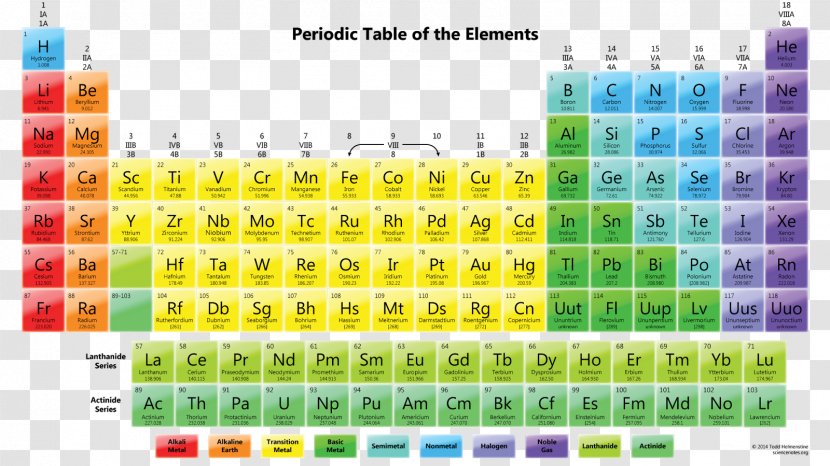The atomic mass of an 56 Fe isotope is 55.935 u and one mole of 56 Fe will in theory weigh 55.935g, but such amounts of pure 56 Fe have never existed. The formulaic conversion between atomic mass and SI mass in grams for a single atom is: where u is the atomic mass unit and N A is Avogadro's number. Relationship between atomic and molecular masses. ››More information on molar mass and molecular weight. In chemistry, the formula weight is a quantity computed by multiplying the atomic weight (in atomic mass units) of each element in a chemical formula by the number of atoms of that element present in the formula, then adding all of these products together. Mass of Atom (u)% Abundance 57 Fe 56.935399 2.119 58 Fe 57.933280 0.282 27 Cobalt 59 Co 58.933200 100 28 Nickel 58 Ni 57.9353 60 Ni 59.9307 61 Ni 60.931060 1.1399 62 Ni 61.928349 3.6345 64 Ni 63.927970 0.9256 29 Copper 63 Cu 62.929601 69.17 65 Cu 64.927794 30.83 30 Zinc 64 Zn 63.929147 48.63. Symbol: Fe Atomic Number: 26 Atomic Mass: 55.845 amu Melting Point: 1535.0 °C (1808.15 K, 2795.0 °F) Boiling Point: 2750.0 °C (3023.15 K, 4982.0 °F) Number of Protons/Electrons: 26 Number of Neutrons: 30 Classification: Transition Metal Crystal Structure: Cubic Density @ 293 K: 7.86 g/cm 3 Color: Silvery Atomic Structure.

Molar mass of Fe = 55.845 g/mol
Convert grams Fe to moles or moles Fe to grams
| Symbol | # of Atoms | Iron | Fe | 55.845 | 1 | 100.000% |
In chemistry, the formula weight is a quantity computed by multiplying the atomic weight (in atomic mass units) of each element in a chemical formula by the number of atoms of that element present in the formula, then adding all of these products together.

The atomic weights used on this site come from NIST, the National Institute of Standards and Technology. We use the most common isotopes. This is how to calculate molar mass (average molecular weight), which is based on isotropically weighted averages. This is not the same as molecular mass, which is the mass of a single molecule of well-defined isotopes. For bulk stoichiometric calculations, we are usually determining molar mass, which may also be called standard atomic weight or average atomic mass.
A common request on this site is to convert grams to moles. To complete this calculation, you have to know what substance you are trying to convert. The reason is that the molar mass of the substance affects the conversion. This site explains how to find molar mass.
Formula weights are especially useful in determining the relative weights of reagents and products in a chemical reaction. These relative weights computed from the chemical equation are sometimes called equation weights.
Using the chemical formula of the compound and the periodic table of elements, we can add up the atomic weights and calculate molecular weight of the substance.
Finding molar mass starts with units of grams per mole (g/mol). When calculating molecular weight of a chemical compound, it tells us how many grams are in one mole of that substance. The formula weight is simply the weight in atomic mass units of all the atoms in a given formula.
Atomic Mass Of Fe3
If the formula used in calculating molar mass is the molecular formula, the formula weight computed is the molecular weight. The percentage by weight of any atom or group of atoms in a compound can be computed by dividing the total weight of the atom (or group of atoms) in the formula by the formula weight and multiplying by 100.
Molar Mass, Molecular Weight and Elemental Composition Calculator

Atomic Mass Of Fe-55
Molar mass of FeS is 87.9100 g/mol Convert between FeS weight and moles
Elemental composition of FeS
Sample reactions for FeS
Formula in Hill system is FeS | |||||||||||||||||||||||||||||||||||
Computing molar mass (molar weight)To calculate molar mass of a chemical compound enter its formula and click 'Compute'. In chemical formula you may use:
Molar mass calculator also displays common compound name, Hill formula, elemental composition, mass percent composition, atomic percent compositions and allows to convert from weight to number of moles and vice versa. Computing molecular weight (molecular mass)To calculate molecular weight of a chemical compound enter it's formula, specify its isotope mass number after each element in square brackets.Examples of molecular weight computations: C[14]O[16]2, S[34]O[16]2. Definitions of molecular mass, molecular weight, molar mass and molar weight
Give us feedback about your experience with Molecular Weight Calculator. Related: Molecular weights of amino acids | |||||||||||||||||||||||||||||||||||
| molecular weights calculated today | |||||||||||||||||||||||||||||||||||
Mass Number Of Fe
| Back to Online Chemical Tools Menu |
© 2021 webqc.org All rights reserved
Atomic Mass Of Fe2o3
| Periodic table |
| Unit converters |
| Chemistry tools |
| Chemical Forum |
| Chemistry FAQ |
| Constants |
| Symmetry |
| Chemistry links |
| Link to us |
| Contact us |
How to cite? |
WebQC.Org online education free homework help chemistry problems questions and answers |
